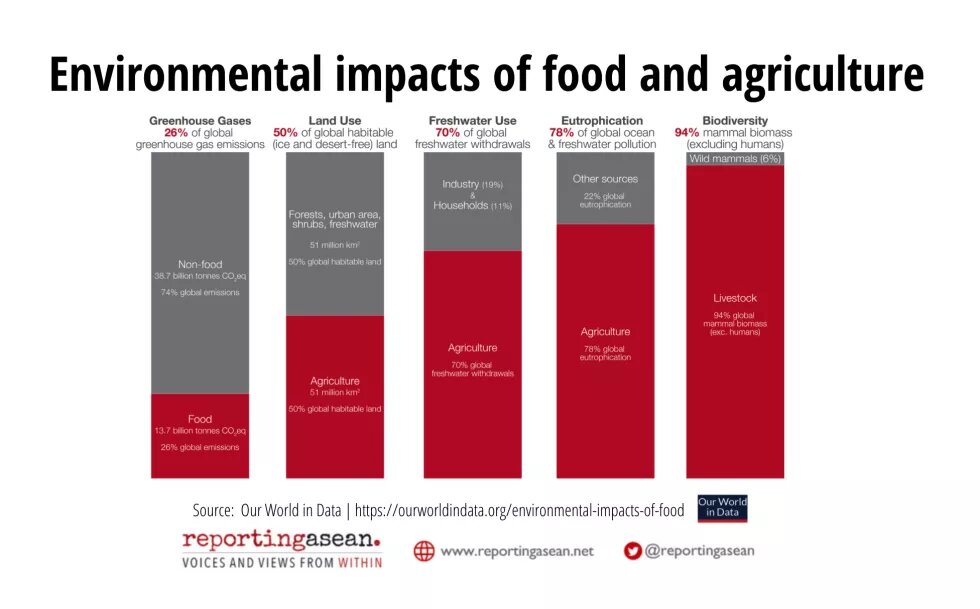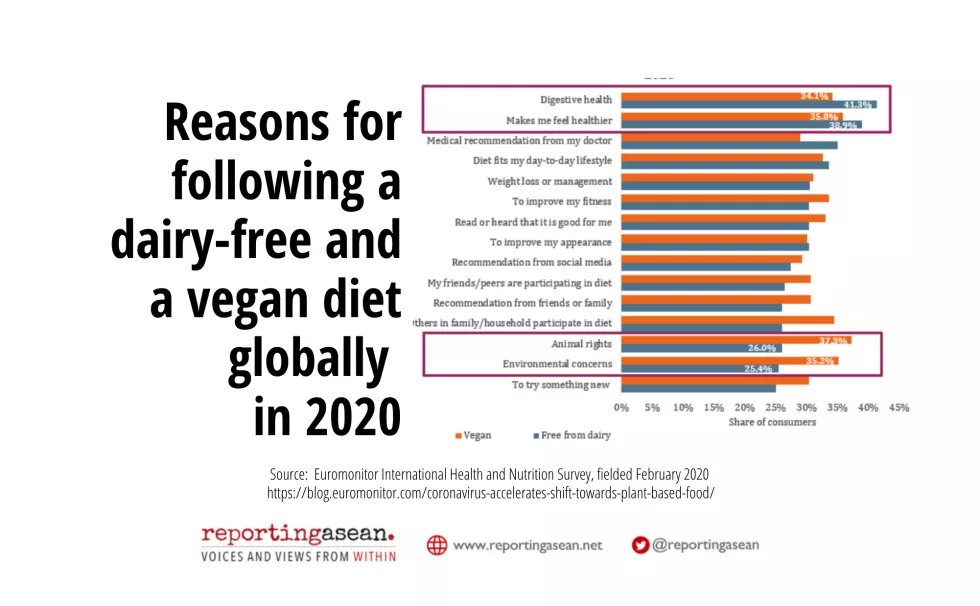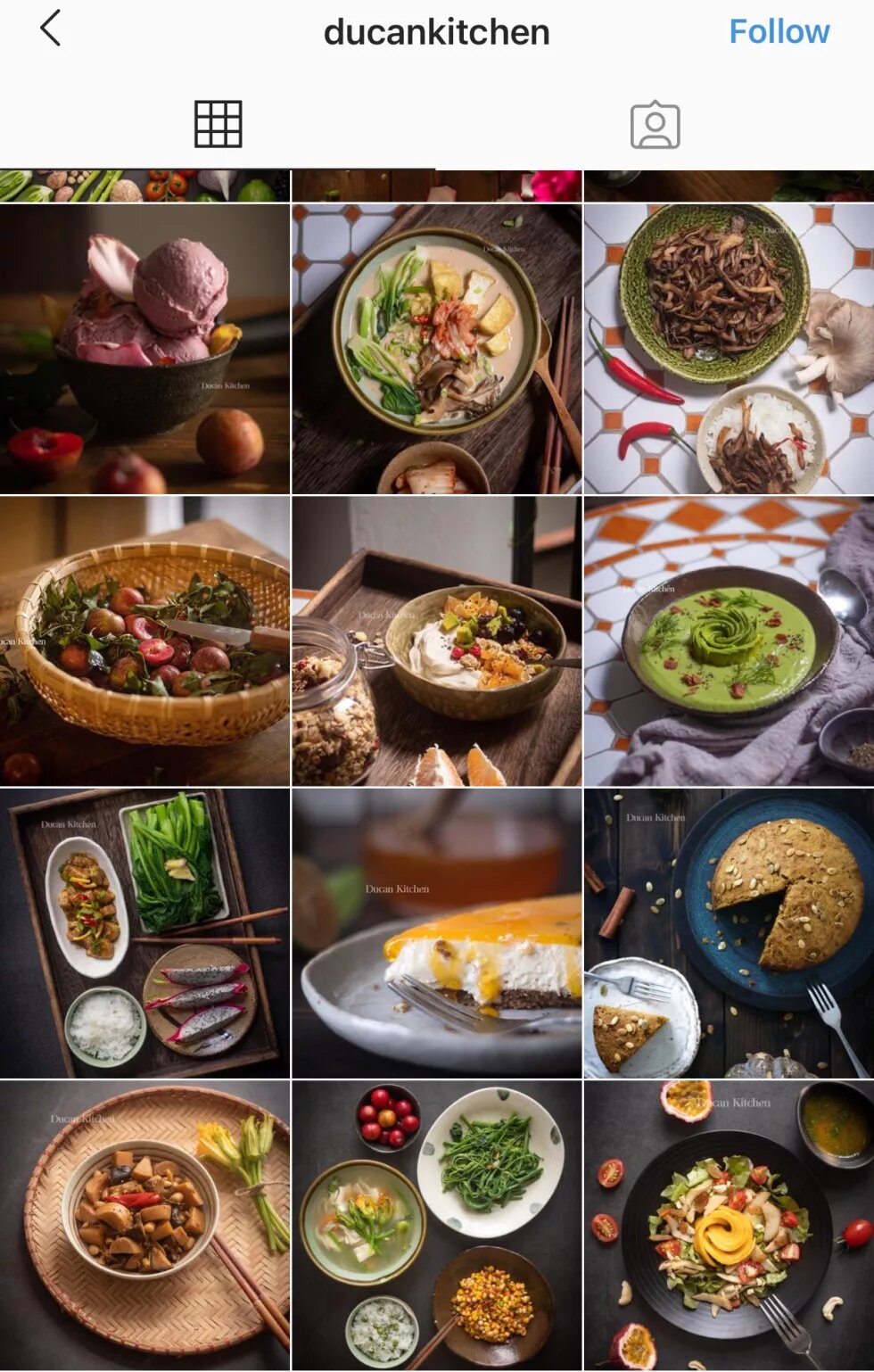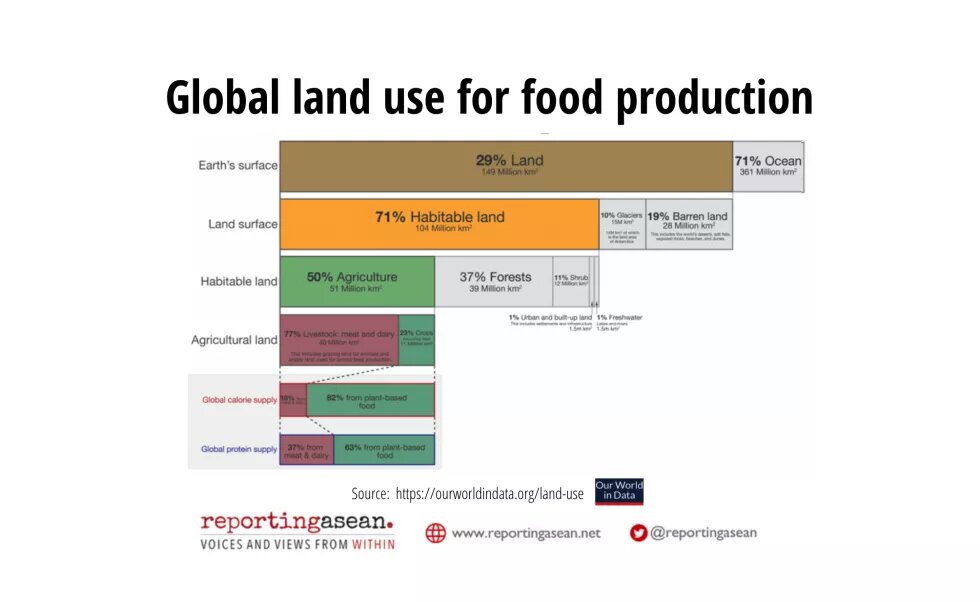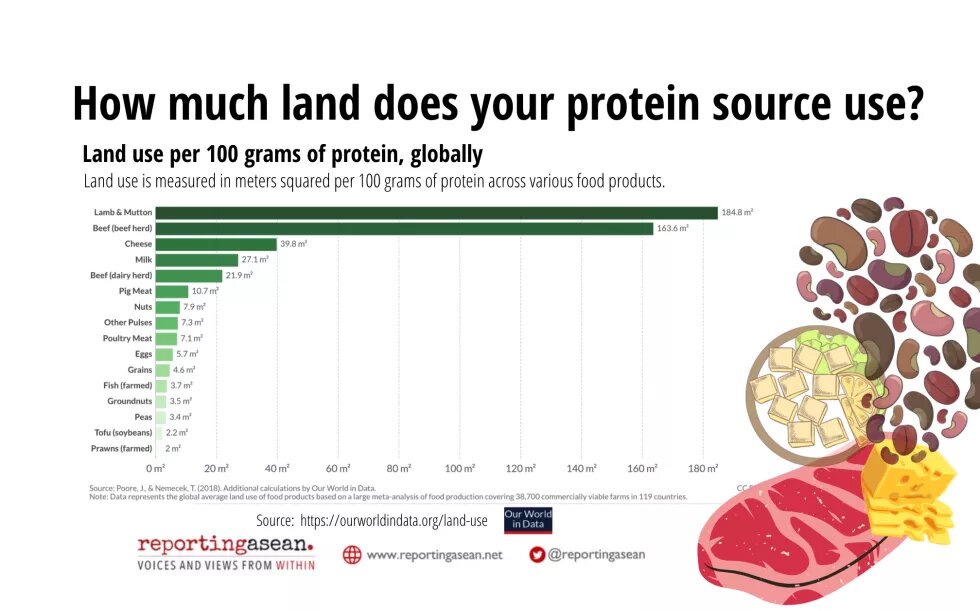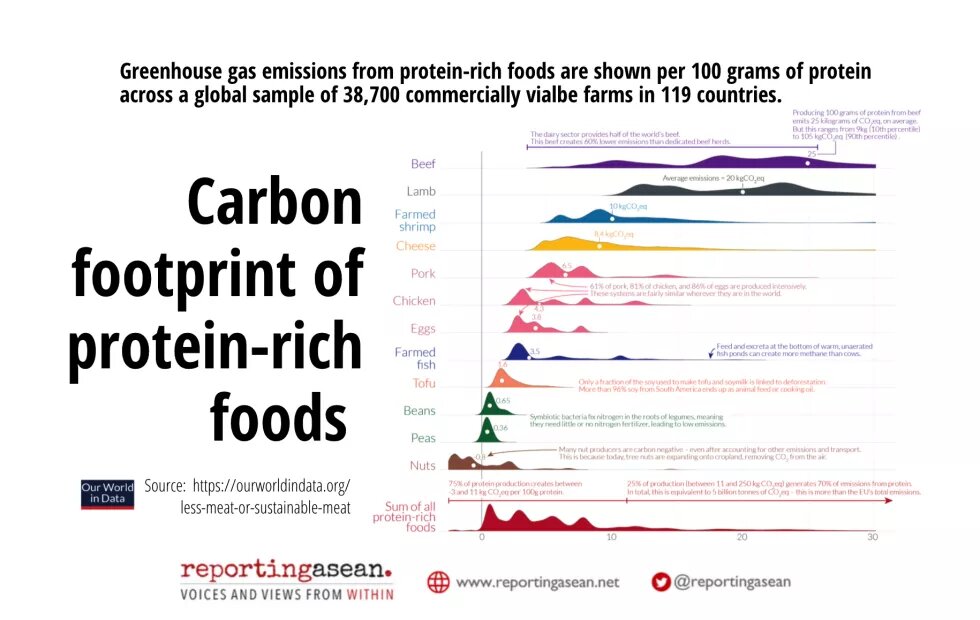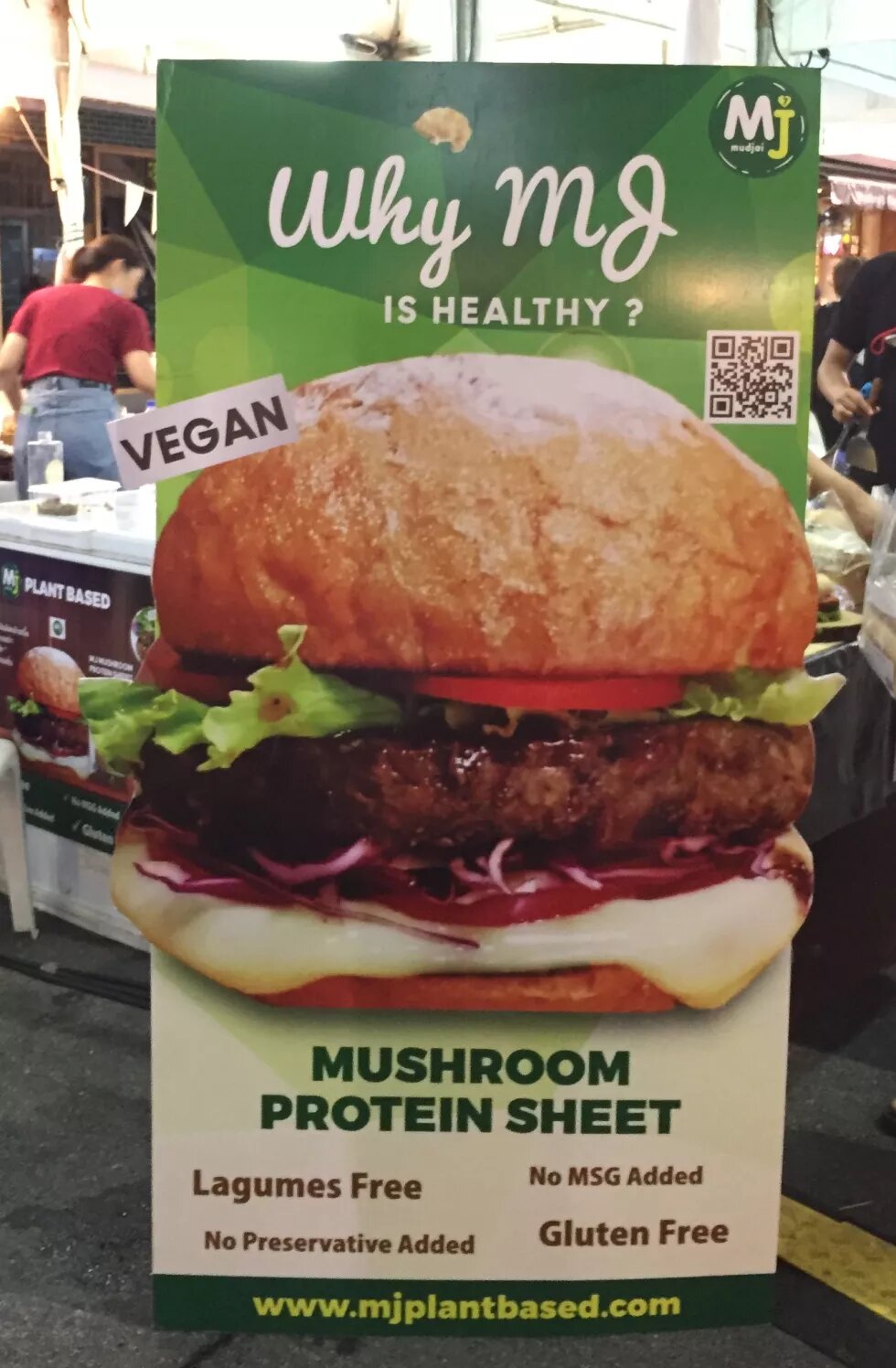
Bangkok residents are finding more options for plant-based meat, with names like ‘More Meat’, ’Never Meat’ or ‘Let’s Plant Eat’, in groceries. In Manila, a government agency ran a contest for creating plant-based versions of native dishes. Over in Vietnam, social media influencers are urging followers to think sustainability through their food habits.
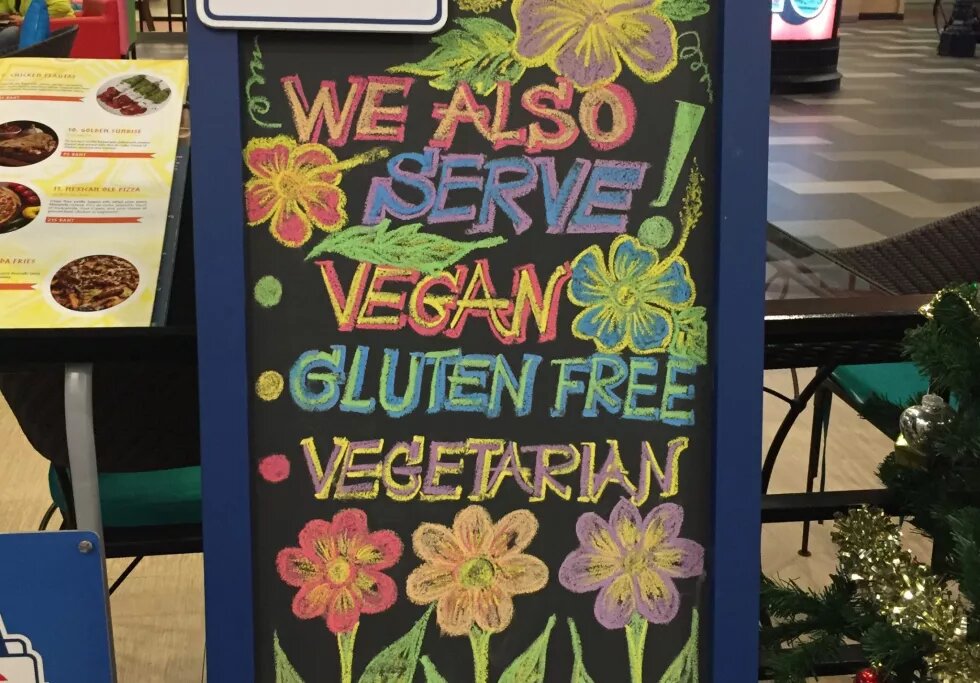
So, no, you’re not just imagining it: There are more ideas, more products and more talk around eating with less or no animal meat in Southeast Asia these days.
Startups have been sprouting up - despite the weak business environment amid COVID-19 - to sell plant-based food and products offline and online as consumers explore lifestyle changes whether as investments in their own health or that of the planet’s amid climate change and the pandemic.
Restaurants have been expanding menus with vegetarian or plant-based options. In Bangkok, the list of places with plant-based or plant-rich choices, be it ramen, plant-based patties and nut cheese, or veganized northeastern Thai food or Thai-style noodles, continues to grow.
“Even the smallest change (in food choices) matters,” said Ha My Leova, a 24-year-old Vietnamese student in Tokyo who is vegan. She cut animal meat out of her menu due to “too cruel” practices in raising, transporting and processing such products.
For Filipino theatre artist Lea Espallardo, the switch to mostly plant-based food came from a mix of reasons: personal health and a desire to support friends with health problems, exposure to Netflix documentaries, as well as ethical questions about raising animals for human consumption.
“COVID just gave me more time to reflect,” Espallardo said of how all these came together for her. “I was in lockdown so I had a lot of time to reflect about life.”
Learning that a friend’s partner with lung cancer had shifted to plant-based eating gave her a very personal push. “Realising I have too many friends afflicted with cancer and then went on lifestyle changes, I decided to go on a solidarity diet just to try it out,” she recalled. “I also realised that our consumption of meat is too much, and something has to change.”
“Now, this (having plant-based food choices) is becoming (more) mainstream,” Taksina Nuangsri-Anttilla, co-owner of Barefood Bangkok, said, observing a shift in the local food scene since the eatery opened five years ago. “Even within the (last) year, let's say you're only plant-based, or you prefer vegetables or non-animal products, you don't have to explain (your choice) too much.”
Are people going for plant-based and plant-rich dishes because they are available, or is it that producers are responding to what people are looking for?
“This is a chicken-and-egg thing,” said Smith Taweelerdniti, whose Chiang Mai-based Let’s Plant Meat startup launched its plant patties in May 2020. “It’s (still) at the beginning so (with) more and more players competing, more and more products come in and more and more restaurants participate, and more and more consumers willing to order that thing in the restaurant, that will create change,” he said at a webinar last year.
Climate change and pollution have been driving changes in behaviour toward a kinder-to-us-and-the-planet lifestyle, be it through the reduction of plastic use and waste, phasing out coal, or the production of electric cars, as shown in several surveys.
A WORLD OF WORRIES
Indeed, results of the survey ‘What Worries the World’, released by the research firm Ipsos in February, says that 64% of consumers identified COVID-19 was their top concern, followed by 49% who were worried about environmental issues, 47% about economic issues and 40%, food safety.
These COVID-19 times have brought out curiosity about the links between the food we put on our table – and the intensive industrial production of livestock, animal meat and dairy whose consumption is a common habit among consumers, the degradation of biodiversity from the loss of wild habitats to agriculture, and the risks of pandemics.
In early 2020, the pandemic pushed many people to avoid some animal products out of safety concerns since SARS-CoV2 was traced to bats, from where it jumped to humans. Some have been wary of pork – the most popular animal meat in Southeast Asia — due to outbreaks of African swine fever.
A year into COVID-19, Southeast Asians continue to avoid raw or uncooked meat. As of mid-February, the highest percentage of raw-meat avoidance was in Thailand (47%), followed by the Philippines and Vietnam at 39% each, data in the YouGov database show.
Questions about sustainability that the pandemic heightened had already been growing among Vietnamese millennials keen on taking personal part to address problems like greenhouse gas emissions and climate change, explains Vu Anh Tu, who opened the Du Du Xanh vegetarian restaurant in Ho Chi Minh City in October.
More knowledge about health, as well as interest in natural and organic products, “eventually motivates them to balance or adjust menus” toward food habits based on little or no animal meat, said Vu, who goes plant-based thrice a week. “Both supplies and farmers are more aware of the demand for organic, thus there is an increasing trend in selling plant-based food, especially vegetables.”
For its part, the Philippines’ Environmental Management Bureau used a contest inviting submissions of plant-based recipes for local dishes to push greener food choices. This initiative, held during the pandemic, showed that using food habits to ease the pressure on the environment is “practical, doable and healthy”, bureau director William Cuñado said in a reply to emailed questions.
Running the campaign during COVID-19 helped because “people are now more health-conscious than ever, especially when it comes to boosting their immune system”, he added. The bureau’s campaign encouraged Filipinos to use local plant-based options such as tofu, lentils and root crops, including those that they grew in their backyards during lockdown.
Global data around the factors that shape food habits, the growth of consumers markets as well as incubators and accelerators targeting plant-based innovation, reflect interest in environment health and its impact on human life. Between one quarter to a little over 41% of vegans and people with dairy-free diets cited as reasons for their dietary choices health and environmental concerns/animal rights, says data from a February 2020 survey by Euromonitor International.
Euromonitor reported the value of the substitute meat market in the Asia-Pacific at 15.3 billion US dollars in 2019, expecting growth in succeeding years. In September, the Hong Kong-based Green Monday, which produces and exports OmniPork made from soy and rice, raised 70 million dollars for expansion. Indonesia is seeing plant-based startups such as Green Butcher.
FROM ‘I’ TO ‘WE’?
If food-related choices used to be in the almost-sacred territory of personal space, anxiety about the health of the global environment and human survival - has been nudging them into public spaces.
Such choices are increasingly seen a contribution to the larger good, toward shaping a more sustainable future.
They form part of the connections between the natural environment, human interventions such as the expansion of agriculture (the term refers to cropland and grazing land), land conversion, increased mobility, and even road construction. These allow for more, and non-normal, interaction between people and wildlife, and in turn amplify health and other risks.
Livestock, which uses more than three-fourths of the world’s agricultural land, are a bridge of sorts between humans and wildlife that allows viruses that are harmless to animals to cross over, and sicken, human beings. Many pathogens that are dangerous to humans are usually from wildlife, and stay there.
“But the best way for these pathogens to expand and to contact humans is usually through livestock, because these are the species we interact with a lot more,” Carlos Gonzalo Das Neves, research director at the Norwegian Veterinary Institute, told journalists at a webinar by the World Association of News Publishers in late 2020.
Consuming more vegetables, nuts, seeds and pulses and fruits, the thinking goes, would help take the world’s foot off the pedal that drives demand for animal meat.
A total of 70% to 75% of emerging diseases come from the animal reservoir, Sylvie Briand, director of the Global Infectious Hazard Preparedness department at the World Health Organization (WHO), said at the same event.
The health of the environment and humans do converge in food, through the production systems that have made animal meat consumption a convenient, accessible habit. Consuming more vegetables, nuts, seeds and pulses and fruits, the thinking goes, would help take the world’s foot off the pedal that drives demand for animal meat – and send market signals away from this demand. In short, it would point to ways of feeding the human population in a way that does not wreck the world they live in.
While some turn to plant-based foods due to health or religion, “many of us, especially young people treat this as a way of minimizing our impact on our surroundings or as caring more about the welfare of animals,” said Duc Nguyen, a plant-based food blogger in Vietnam whose Ducan Kitchen has more than 43,000 followers on Facebook and over 6,300 in Instagram.
MORE, AND WIDER, CONVERSATIONS
Food habits and the factors that drive them, as well as the heavy use of land and water for livestock and the production of animal protein, are also making their way into the conversations of development professionals and scientists.
While use of, and trade in, wildlife have gotten huge public attention in COVID-19 - the outbreak in China’s Wuhan province was at a market that sold them - wildlife is far from the only factor in the animal connection in pandemics.
“If you're putting a very intensive livestock production on the same spot where you have this wildlife species, and they touch with each other, you shouldn't be surprised that problems will come,” Das Neves pointed out.
Take the case of Nipah virus, which was discovered in 1999 in Malaysia and causes severe respiratory illness and fatal encephalitis. There is no vaccine for Nipah, which has a death rate of 40% to 75%.
Fruit bats, the natural animal reservoir for Nipah, do not typically come into contact with humans, but industrialised pig farming brought the two too close in the village where the virus was detected. How? “It comes from the bats, but the fact was that pig farming was happening next to the bats,” said Das Neves.
The mango trees that farmers had planted near the pig pens drew fruit bats, which are often driven out of their natural habitats. The dropped mango bits into the pens, which were eaten by the pigs. Infected pigs passed the virus to the people around them.“Humans don't daily go on a routine, shaking hands with the bats, but humans do routinely go on handling the pigs,” said Das Neves.
A look at the global picture in agriculture shows how drastically it has changed the natural environment and squeezed out wild habitats over the centuries. “The expansion of agriculture has been one of humanity’s largest impacts on the environment,” One World in Data said in its dataset on global land use and food production.
“It has transformed habitats and is one of the greatest pressures for biodiversity: of the 28,000 species evaluated to be threatened with extinction on the IUCN (International Union for Conversation of Nature) Red List, agriculture is listed as a threat for 24,000 of them,” said the One World in Data website, a project of Global Change Data Lab. “But we also know that we can reduce these impacts – both through dietary changes, by substituting some meat with plant-based alternatives and through technology advances, including major increases in crop yields.”
“Solutions from both consumers and producers” offer ways to restore some of this ‘lost’ farmland back to forests and natural habitats, it added.
Seventy-seven percent of agricultural land worldwide (including grazing land and arable land for producing animal feed), or 40 million square kilometers, is used for livestock, meat and dairy, and 23% goes to crops, Our World in Data reported. Yet livestock produces just 18% of the world’s calories and 37% of total protein.
The website’s figures on land use by type of protein reveal more: lamb and mutton production uses the most land at 184.8 square meters per 100 grams of protein, followed by beef (163.6 sq m) and cheese (39.8 sq m). In contrast, tofu production uses 2.2 sq m per 100 grams. (In terms of carbon footprint, beef emits the most amount of carbon dioxide on average at 25 kilogrammes per 100 grams of protein. Nut production, in comparison, emits 0.8 kg per 100 grams of protein, and remove carbon dioxide from the air, says the One World in Data table on the carbon footprint of protein-rich foods.
“So, intensive farming has three bad effects – it reduces biodiversity (by) cutting down forests, increases the amount of greenhouse gases due to animals’ methane emissions, and increases the risk of a pandemic. It’s a lose-lose-lose for everyone,” Francesco Ricciardi, environmental specialist at the sustainable development and climate change department at the Manila-based Asian Development Bank, said in an interview.
“My personal opinion is we should modify our own diet, try to reduce our own meat consumption so it will allow us to be healthier, get the benefits from the planet in terms of greenhouse gas emissions and biodiversity lost,” he added.
Animal meat consumption is linked to cardiovascular diseases, which is the top cause of death globally (27% of total in 2019), as well as cancers, especially colorectal cancer. The WHO lists processed meat as a Class 1 carcinogen, that “has been proven to cause cancer in humans”. Red meat is in Group 2A, described as “probably carcinogenic”.
Although meat has known health benefits, cancer risk increases with more amounts consumed, the global health agency said. “Many national health recommendations advise people to limit intake of processed meat and red meat, which are linked to increased risks of death from heart disease, diabetes, and other illnesses,” the WHO brief pointed out.
A MORE ‘WOKE’ FEEL
Whatever the reasons for tasting, switching or sticking to plant-based dishes, the emergence of wider, more diverse menus can only be good, and more delicious, news.
Today’s plant-based creations, though more popular in cosmopolitan settings, are updating the old perceptions of vegetarianism and veganism and branding them as choices that are healthy, creative. Plant-based eating appears to have a more ‘woke’ feel to it, not stuck in the strict categorisation of people through food habits.
In fact, diners at plant-based places usually include individuals who consume animal products. A 50-50 mix makes up the clientele of Bangkok City Diner, which opened nearly a year ago. “The more people are around other people that eat vegan, the more likely they are to try it,” said its co-owner, Gareth Sheehan.
Barefood Bangkok’s Taksina says 60% of its regular diners are not plant-based, but just like the food items that range from pasta, salads to plant-based burgers and vegetable sandwiches.
“We do not label our customers but approach all segments since we think, indeed, plant-based meals are a cuisine,” Vu Anh Tu, the owner of Du Du Xanh restaurant, was quoted as saying in a published article. “Our patrons vary from aged 25 to 55, and can be authentic vegan, vegan lovers, or even just individuals who care about natural and healthy lifestyles.”
In Thailand, which has an annual festival where people refrain from eating animal meat, Smith says that vegetarianism has been seen as conservative, part of Buddhist (also Taoist) practices, or a kind of sacrifice to earn merit. Having appealing plant-based options, far beyond salads or leafy greens, means “we are in a new, new area where we want to create something non-meat but with good taste,” he pointed out.
In truth, vegetables, nuts, beans or tofu are usually already on Southeast Asians’ plates. OmniPork’s David Yeung says some 34% of Hong Kong people are already flexitarians, who eat a mostly vegetarian diet but take some animal products. One does not need to go to upscale places or pay a lot for plant-based food, one Bangkok resident adds. “It’s about giving vegetables most of the space in your plate. I just don’t call it ‘plant-based’.”
__
Johanna Son is the Bangkok-based editor/founder of the Reporting ASEAN series. Uyen Diep contributed reporting for this from Vietnam.
This article was first published in Reporting ASEAN on 26 February 2021.
This feature is part of the ‘Sustainability Series’ in collaboration with Probe Media Foundation Inc, with the support of the Heinrich Böll Stiftung Southeast Asia Regional Office.
The views expressed by the author are not necessarily those of Heinrich Böll Stiftung.
